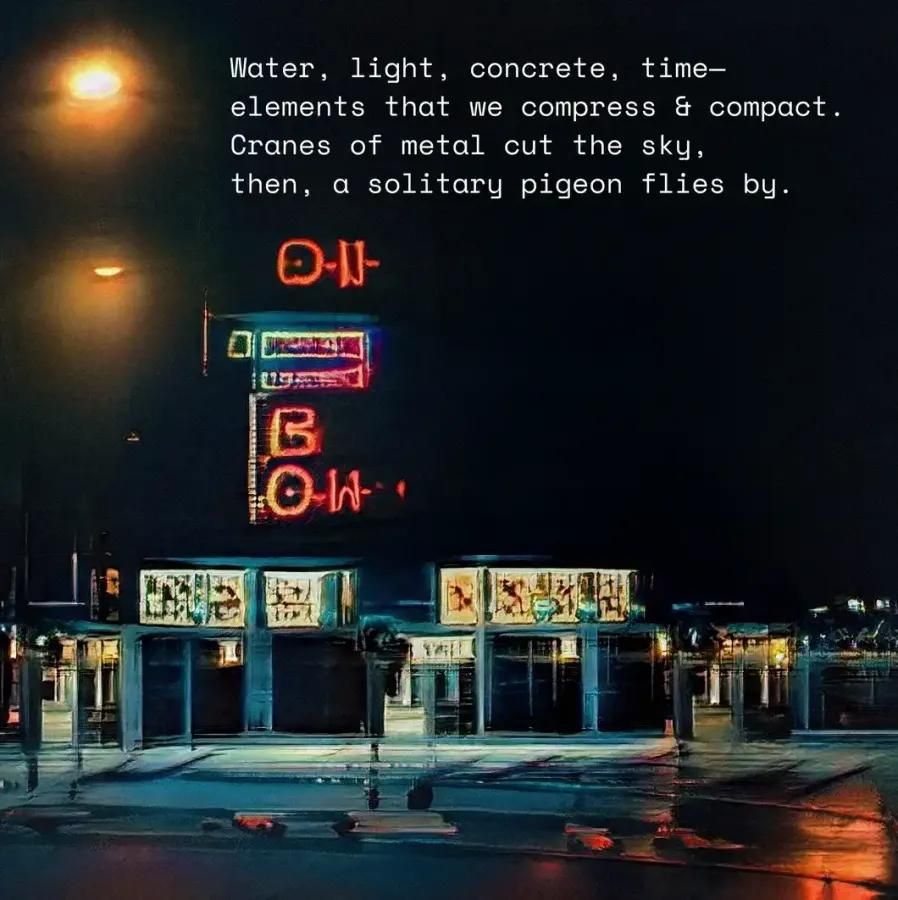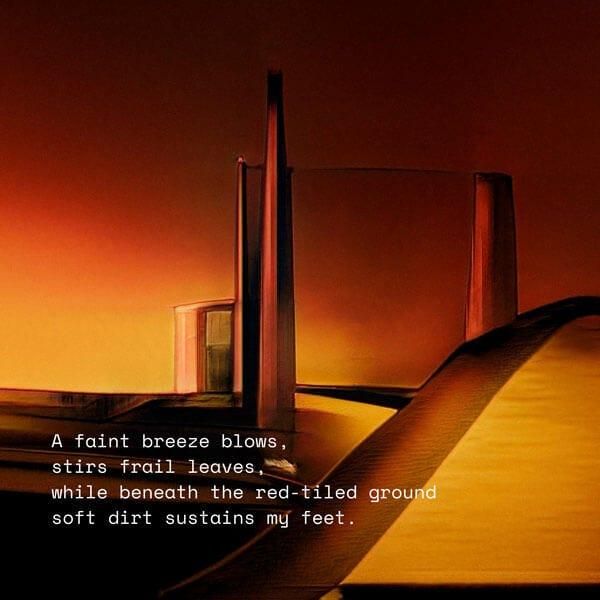A Trick of the Light: How Web 3.0 is Revolutionizing the World of Poetry with Anna María Caballero
This journey to prominence and thought-leadership has not been a linear one for Anna María Caballero. Like many in the world of poetry, she found it exceedingly difficult to gain recognition for her work.
Originally published at Tezos Commons News
1,350 words, 7 minute read

The conversation around blockchain technology and NFTs as progressive tools with the potential to upend entrenched and problematic paradigms in the world of art is a lively and contentious one. To some, these digital gimmicks represent little more than a passing fad — and one whose zenith has already come and gone. To others, these powerful and oft-misunderstood tools are nothing short of revolutionary.
In this debate, international prize-winning poet and artist Anna María Cabballero falls firmly in the “revolutionary” camp, and she’s put her money where her mouth is by launching a literary gallery called theVERSEverse right here in the Tezos ecosystem. To hear her tell it, blockchain technology and NFTs represent much more than a new way to market, sell, and collect art. For Anna María Caballero, the generations of poets that came before her, and the many generations of poets to follow, these fledgling digital tools represent something that feels a lot like long-overdue justice…
I always wondered why EE Cummings wasn’t exhibited in the MOMA alongside a Jackson Pollock. Movements that have transformed culture and how people engage with language, with art, with visuals - for me - belong together. They should be curated, they should be exhibited, and they should be collected as such. But poetry had a logistical issue. It’s probably not going to be exhibited in a way that you can engage with it in a public space.
I just felt that we needed to bring on new thinking, and what I love about Web 3.0 is that it invites new thinking. It was time for poetry to be valued as art and exhibited and curated and transacted as art and to overcome the logistical problem that it had via the blockchain and via blockchain provenance. For me, it was about paying poetry its dues.
In the service of ensuring that those dues make their way to poetry and the poets who create it sooner, rather than later, Anna María Cabellero has made it her mission to carve out a space for the written word in the emerging and exciting Web 3.0 digital art space. Her NFT works have become hot commodities in the digital art arena in and of themselves, but her impact on this emerging medium and poetry’s place within it can be felt well beyond the confines of the digital art marketplaces that house them.

This journey to prominence and thought-leadership has not been a linear one for Anna María Caballero. Like many in the world of poetry, she found it exceedingly difficult to gain recognition for her work. It was only after embracing the opportunities presented by Web 3.0 and its attendant technologies that she was able to gain significant ground. In the blockchain-powered digital art world, she was finally able to find the platform for her work that she’d been looking for…
Before, there was like a total disinterest in what I’m doing from the traditional literary community. Then it evolved into a really conscientious interest. There is a legitimate interest in what’s going on — a desire to learn. If not to participate, at least to learn and to understand what it is that is going on. More and more poets are entering, looking to mint, and looking to find a community.
This “community” of like-minded artists, collectors, and appreciators has coalesced, to a startling degree, right here in the Tezos ecosystem. In Tezos and its thriving art community, Anna Maria found the right mix of open-mindedness and supportiveness to realize her vision of poetry-as-art in a healthy, robust, and sustainable way; something she touched on with our own Marissa Trew during her recent appearance on TezTalks Radio…

I feel like the Tezos community is so vibrant in general and so open to newness. There is really a desire to push boundaries as a collective whole within the Tezos ecosystem and to welcome and celebrate those who are doing so in a thoughtful and rigorous way. Right away I felt like I was welcomed into Tezos.
With her brainchild theVERSEverse bringing Web 3.0-based poetry to the forefront of the digital art discussion, poets like Anna María Caballero have begun to gain the recognition for their work that they deserve, and are now being included in exhibitions around the world. To hear Anna María tell it, however, the journey to claiming a place at the art table for poets and poetry has only just begun…
I’m very happy to be included in these exhibitions, but at the same time, there is noise being made, thoughtfully, within the Web 3.0 poetry community saying ‘hey, we’re doing valuable work. Listen to us.’ The fact that these two things are happening at once is the sweet spot. It’s where we’ll be able to see change happen — and it is! People are including poetry into shows. They are taking us into account.
The endeavor to claim a place at that digital art and Web 3.0 table is an important one, more important than many stakeholders likely realize. As a forward-thinking woman of vision, however, Anna María Caballero can see the writing on the wall. As Web 3.0 plods along toward claiming its inevitable place at the forefront of our increasingly-ubiquitous digital lives, the potential within the NFT and blockchain space is enormous…
eBooks are a billion-dollar industry. The mental leap from a painting to an MP4… I’ll give you that. That’s a big leap. But the mental leap from a Kindle or an eBook to an NFT is tiny. It’s a tiny step. And what you’re gaining as the publisher is a type of provenance and information and knowledge about who your audience is that is absolutely powerful.
I have books on Amazon. I have no idea who’s bought them. But I’ve also sold books as NFTs. I have a collection of short stories that I’ve sold as an NFT, and I know exactly who’s owned it, and I know who’s re-sold it. I sold an edition to a collector of mine who collected my Tezos one-of-ones. He bought a few, and then he listed one. That one was purchased by Keith Grossman, who was then President of Time Magazine. There is a provenance to a story being told via ownership that will capture a history and a moment in time where things were fresh and young that I think is a layer of power to the digital asset itself.
To think of a piece of poetry as a “digital asset” may sound like anathema to a true artist — which Anna María Cabellero most certainly is — but the relationship between art, wealth, and commoditization is one that all who enter this world must contend with at some point. From Anna María’s perspective, these seemingly dichotomous concepts can be reconciled easily.
Web 3.0, blockchain technology, and even Web 3.0 itself, exist as mechanisms to bring power to art and to the artists who create it. In a world where those who dedicate their time and creative efforts to writing poetry have remained on the sidelines due to logistical issues well beyond their control while those who work in more marketable media have claimed the lion’s share of the art dollar for far too long, this opportunity is one that is simply too good to pass up…
To collect poetry in a way that reflects its contribution to culture is to give it agency and to honour the work of the poet. It’s revolutionary. I really don’t think it’s anything less than that.
If providing agency to those who’ve historically lacked it and laying the groundwork for revolutionary changes like these isn’t what blockchain technology is really all about, what are we even doing here? We tip our hat to innovators and boundary pushers like Anna and we cannot wait to see what else she has in store for this digital revolution.